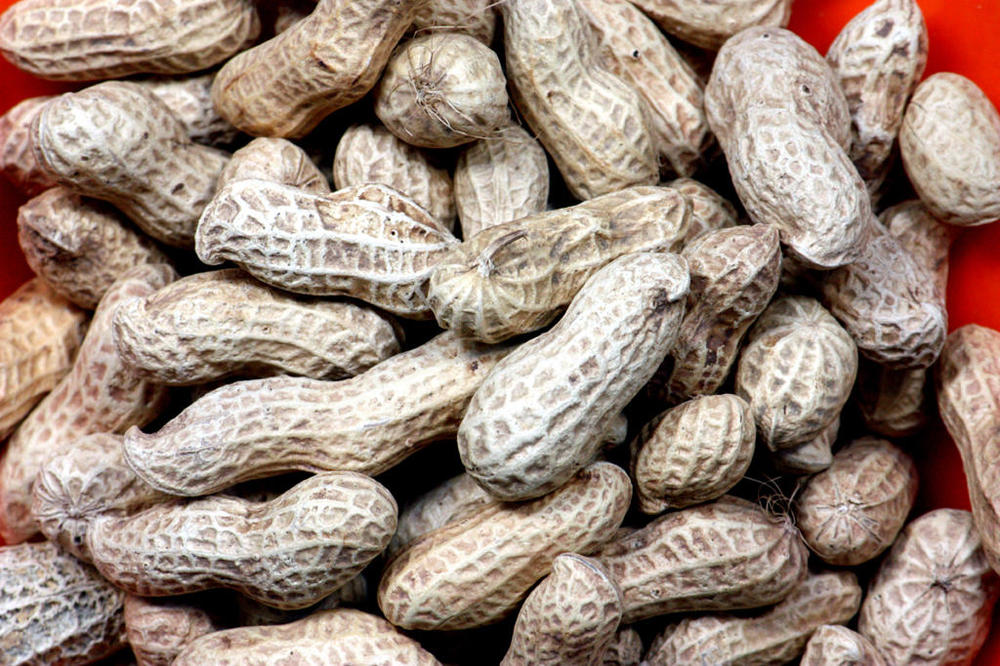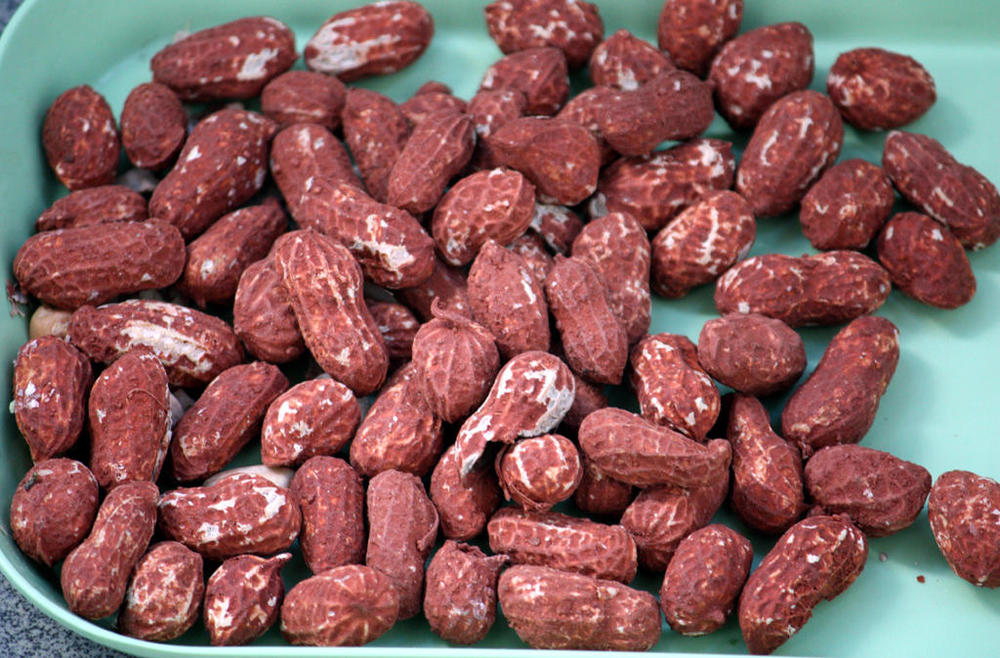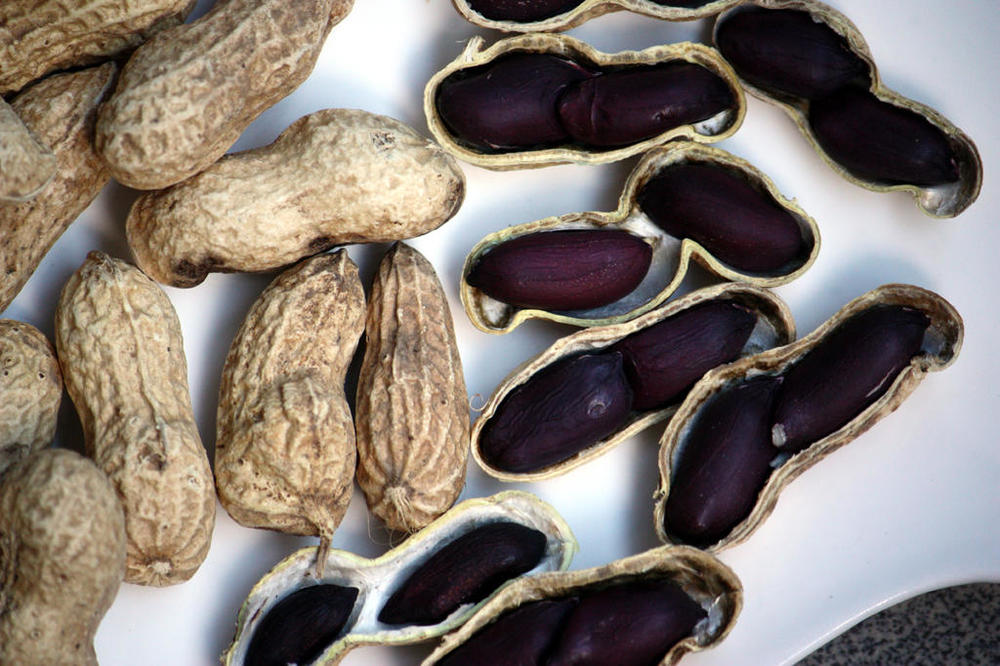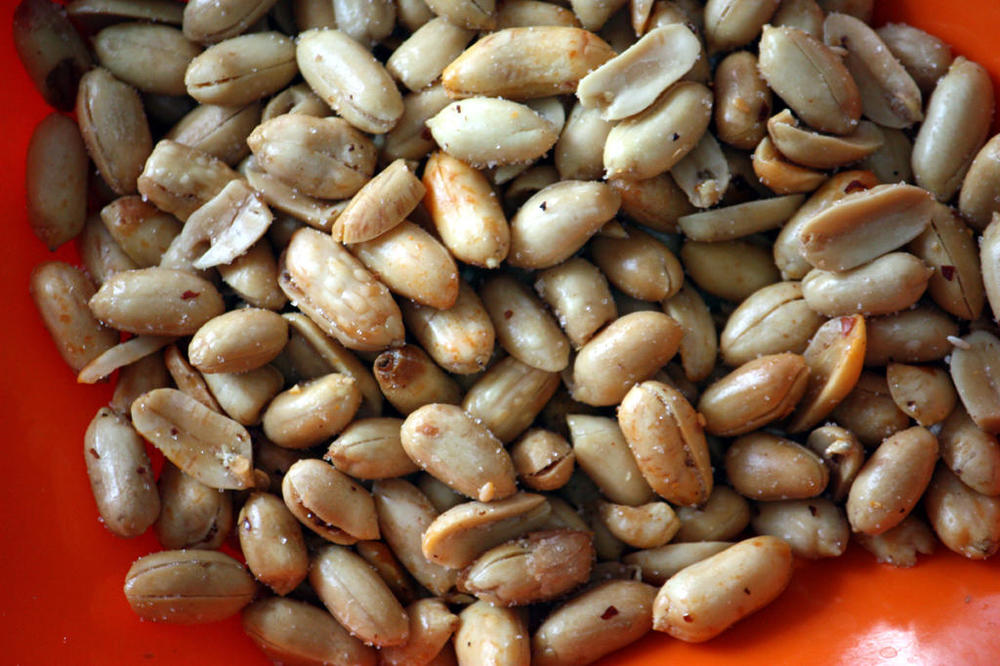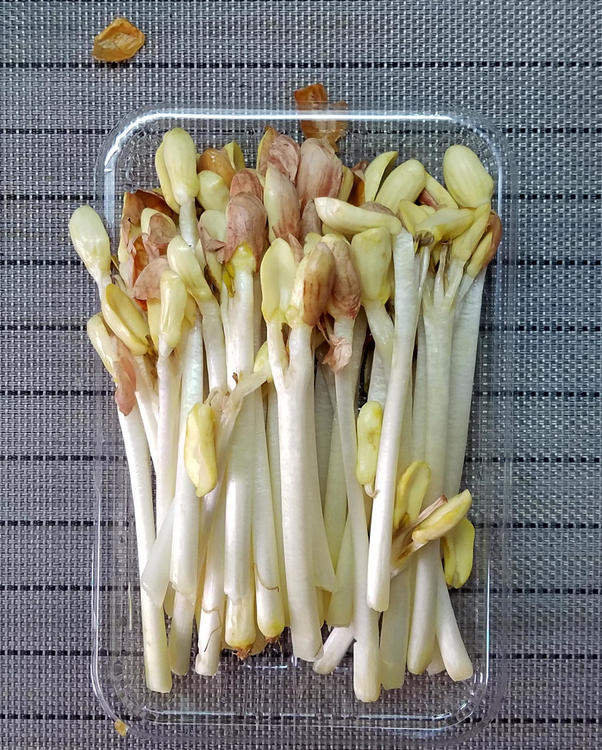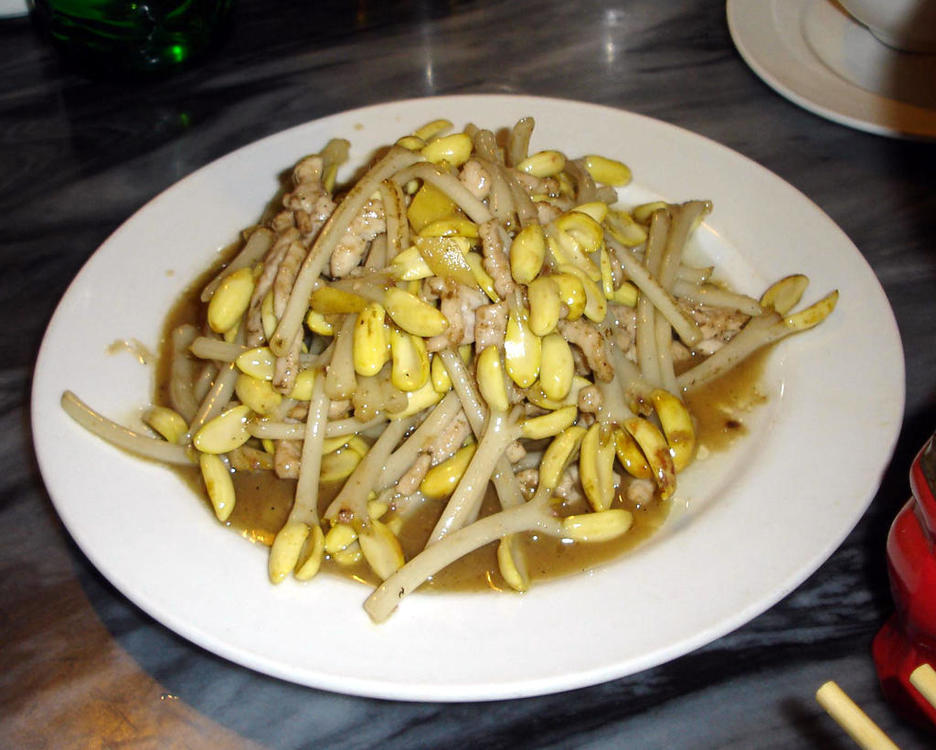I decided, when I started this, not to include nuts, so I feel no shame in bringing you this.
Arachis hypogaea
I suppose most people associate peanuts with the USA, especially the south. Well, they certainly originated in S. America (not south-USA) and are widely consumed in the US, but by far, China is the largest producer today.
Whatever you call them - peanuts, ground nuts, earth nuts, monkey nuts, pygmy nuts, pig nuts or goobers, the one thing for sure is that they aren’t nuts. Rather, they are a legume or bean. But hey, as Juliet said, what’s in a name?
Peanuts, in Chinese 花生 (Mand: huā shēng; Cant: faa1 sang1), are so important to the cuisine here that it is difficult to imagine what they did before they were introduced by Portuguese traders in the 17th century. Much of China's production goes to cooking oil. Peanut oil is the oil of choice around this part of China.
Peanuts are available everywhere. But I have to be careful. Sometimes they are just peanuts in the shell. Other times they have been boiled. I can’t deal with the boiled ones. They feel all wrong. Peanuts in bags from supermarkets are usually just regular peanuts in the shell. Those from street vendors have nearly always been boiled. Don’t ask me why – just one of those Chinese things. You can usually tell by looking. The boiled ones have damp looking slimy surface to the shells.
Apart from the regular in-shell nuts, we can also sometimes find what are one of my favourites. Red mud peanuts 红泥花生/红泥花生 (Mand: hóng ní huā shēng; Cant: hung4 nai4 faa1 sang1)! These have been “cured” by being buried in a muddy red paste of unidentifiable ingredients then baked until the shells turn red and the ‘nuts’ take on a pleasant earthy taste. These are good (in my humble).
Another oddity is a peculiar strain of peanut in which the bean is absolutely black. Nothing has been done to these - that is just they way they are. Black peanuts – 黑花生 (Mand: hēi huā shēng; Cant: hak1 faa1 sang1). They taste exactly the same as the regular ones.
But the nuts nearest my heart are these. Known in Chinese as 酒鬼花生 Mand: jiǔ guǐ huā shēng; Cant: zau2 gwai2 faa1 sang1) or sometimes 啤酒花生 (Mand: pí jiǔ huā shēng; Cant: be1 zau2 faa1 sang1 which translate as “drunkard’s peanuts” or “beer peanuts”, these are right up my street. Basically they are what I consider to be regular roasted and salted peanuts, but they come in two varieties – plain but salted and salted and spicy. I tend to buy a bag of each and mix them 50:50. They are available in every supermarket and corner shop. It isn't obligatory to drink beer with them, but heartily recommended.
As well as being eaten with beer or as snacks, peanuts feature in a number of confectionery items and in cooked dishes, such as stir fries and most famously the Sichuan favourite, 宫保鸡丁/宮保雞丁 (Mand: gōng bǎo jī dīng; Cant: gung1 bou2 gai1 ding1), known in the west as ‘Kungpo Chicken’. They also turn up in many soupy noodle dishes.
Less well known is that peanuts can be sprouted just like any other bean and served as a vegetable, which is my justification for posting this here.
Raw
Stir fried.
Back to more regular vegetation, tomorrow.


